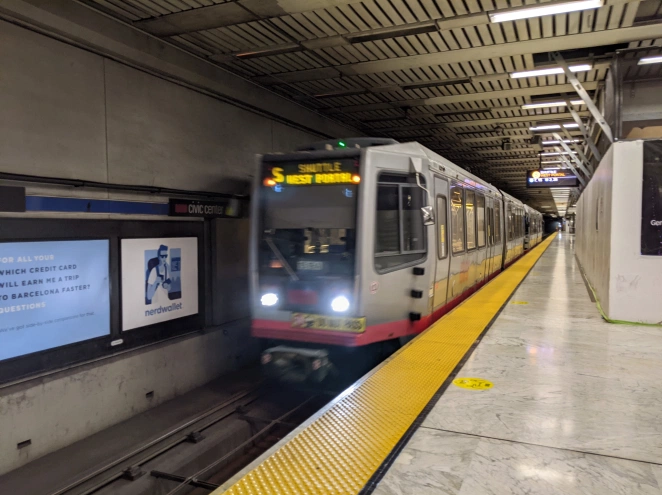Note: GJEL Accident Attorneys regularly sponsors coverage on Streetsblog San Francisco and Streetsblog California. Unless noted in the story, GJEL Accident Attorneys is not consulted for the content or editorial direction of the sponsored content.
Muni is back. Mostly.
Saturday, May 15 marked the return of service in the Market Street and Twin Peaks tunnels, with the N-Judah, K-Ingleside/T-Third and shuttle service finally rolling into the subway again.
"MTA has done a flat ton of work in the tunnels of the subway during the shutdown and on our tour last month we saw a lot of needed Repair and Maintenance had been done along with the new ballast and track resets. As well as adding WiFi," wrote the San Francisco Transit Riders Mark Cordes. "I think we and everyone at MTA are aware that the system is vulnerable to failure at multiple points but I do feel pretty comfortable that SFMTA has worked seriously and hard to get the parts they can ready for service."
Those vulnerabilities became acutely obvious last August, when service was briefly restarted and abruptly shut down again after multiple failures of overhead wire splices. That problem was remedied and Streetsblog confirmed that this time the agency did proper prep and conducted weeks of full-service testing before opening the system to the public.
Despite all the repairs and testing however, there were still bugs.
Train prediction times are erratic this morning. We inserted S-Shuttle trains at last minute to address inbound train control problem, and they're throwing off predictions. Working to fix pic.twitter.com/iZziTPhMFK
— Jeffrey Tumlin 🏳️🌈 (@jeffreytumlin) May 15, 2021
Streetsblog experienced this first hand, after seeing announcements such as this...
...only to have a West Portal Shuttle and a K show up a couple of minutes later. Muni, once it had identified that the predictions were all over the map, opted to post error messages on the arrival boards and made announcements over the public address system instead.
The new and long awaited WIFI service, meanwhile, worked great during the outbound trip:
And then disappeared completely during the inbound trip later Saturday afternoon.
Commentary: but on what planet is over a year of no subway service acceptable?
Certainly, Muni riders are pleased the subway is back. But it remains astonishing that the agency considered shutting down the subway completely for over a year to be an acceptable option. As Streetsblog has pointed out previously, lots of transit systems are old, or cash strapped. All had to deal with COVID. But there's not another system in the world, including North American systems with similarly aged legacy streetcar routes (think of Boston, Toronto, or Philadelphia) that allowed anything remotely equivalent.
It was outrageous even by Muni standards.
"I’ve been driving Light Rail Vehicles since 1999. In the past we’ve had issues where the overhead wire has gone down, but it was always repaired it in a couple of hours, so I don’t understand why everything was shut down," operator Roderick Mills told Streetsblog during a Zoom call with operators held about midway through the shutdown. "In the past you repaired it and you moved on."
Mills's comments were echoed by more than six operators and staffers, some of whom spoke on condition of anonymity with Streetsblog. All of them said there was no justification for shutting down the entire system for such a length of time. "The agency either failed to plan or planned to fail," Muni operator's union president Roger Marenco told Streetsblog.
Streetsblog shares the concerns of Muni's operations and train control staff. Somehow closing core automobile routes for such a duration would never be considered--think of the eastern span of the Bay Bridge, which was left operational for two decades after it was determined that it could collapse in an earthquake.
But the Muni subway is closed over and over again, this time for over a year, while maintenance is done (or, as it turns out, sometimes not done)? The culture at Muni management and, frankly, San Francisco's political elite, has to change. The subway is a vital link.
A prolonged and complete shutdown should never be an option again.






